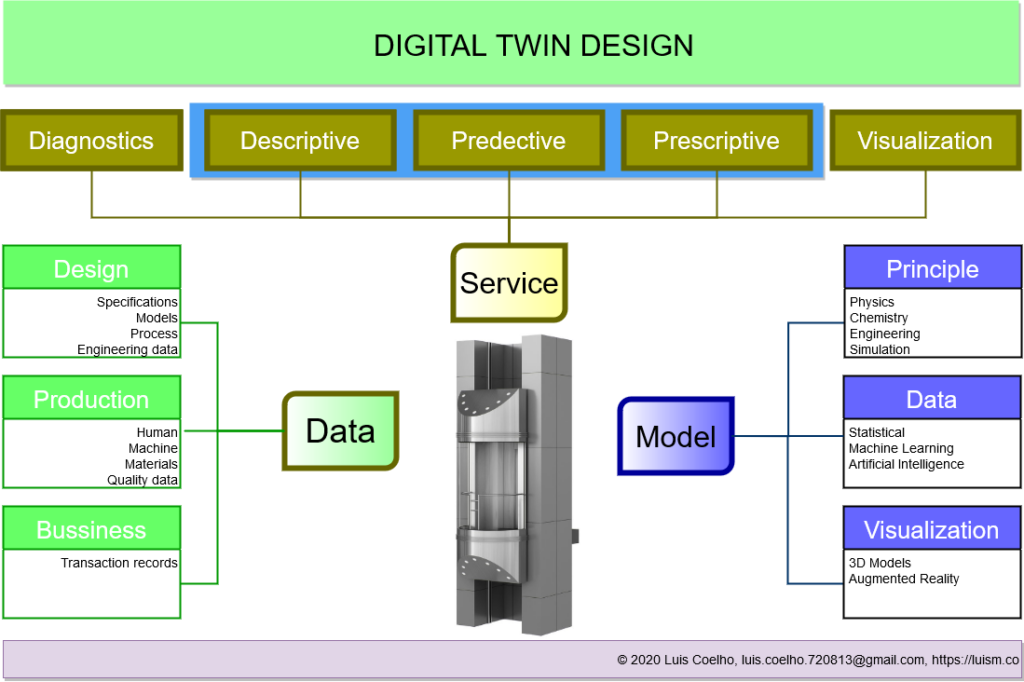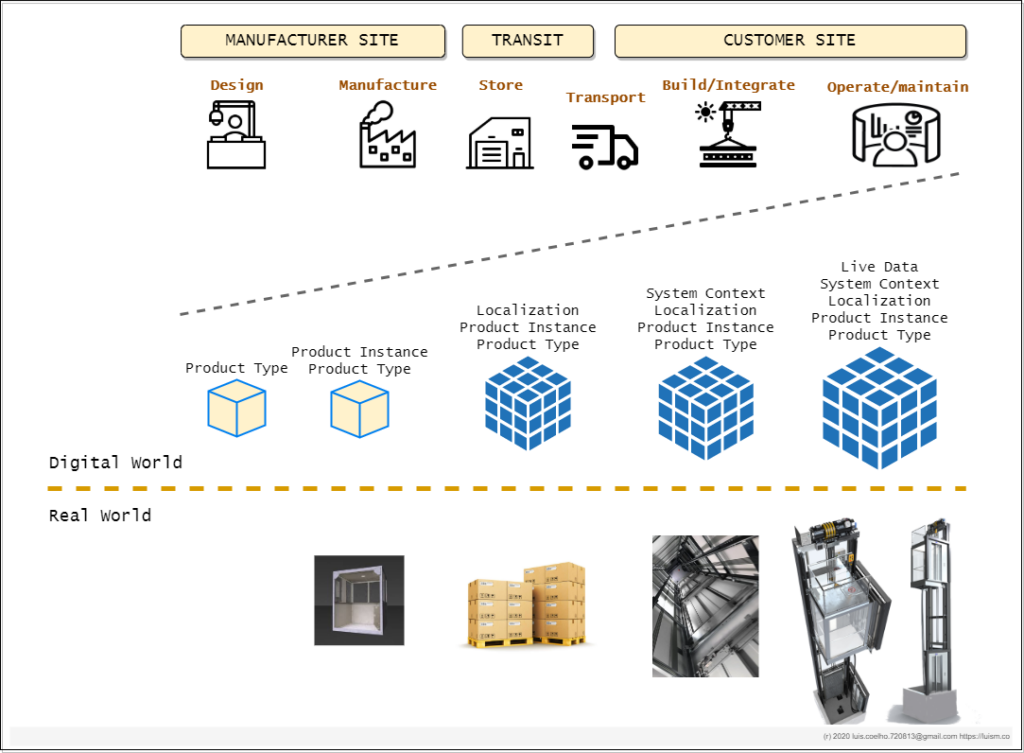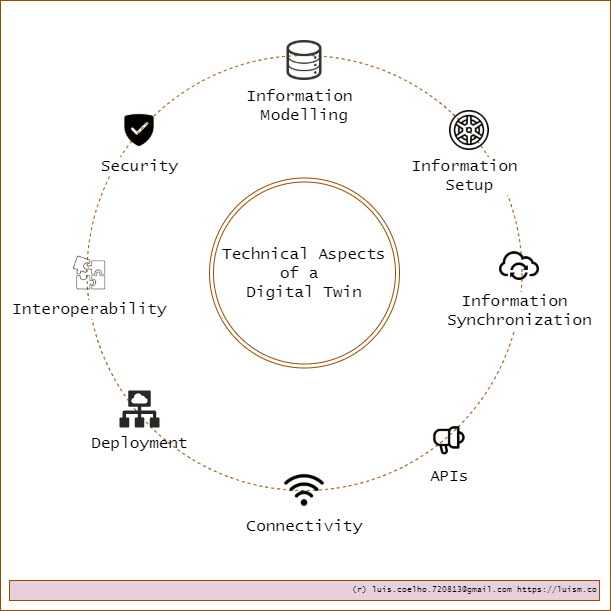Introduction
A digital twin can be defined as a digital representation of an entity, including attributes and behaviors, sufficient to meet the requirements of a set of use cases.
In this context, the entity in the definition of digital representation is typically an asset, process or system.
Digital twin information includes, but is not limited to, combinations of the following categories:
- Physics-based models and data
- Analytical models and data
- Time series data and historians
- Transactional data
- Master data
- Visual models
- Computations
The Generic Digital Twin
As the concept of Digital Twin can have different interpretations and understandings a definition of the generic digital twin is fundamental for then relate the difrent definitions and interpretations of the meaing of a Digital.
In the following chapters I try to bring all together in a summary view to define the digital representation of a system/product/asset in its full lifecycle.
Designing a Digital Twin
Since a digital twin is a representation of something physical, i.e., an object, can be described using the concept defined in an object-oriented programming language for an “Object”, this object by definition contains properties, methods, interfaces and data, in this sense the object is the twin of the real object.

Data
The data of a Digital Twin contains the information required to know the states and behaviors of the object used be the computational models.
In most of the cases the data is produced in the full lifecycle of the object. More concretely in case of a product, it consists of:
- Design phase data: where the product only exist on “paper” starting from specifications, design models, production process and engineering data
- Production phase data: where the product gets materialized and contains data about workers, production equipment, material and parts, production methods and quality assurance
- Operation phase data: where the product is in usage with the following define data (installation and configuration data, real-time and historical state and status, as well as maintenance records) and even end-of-life procedural data.
- It may also contain business data, such as transaction records
Digital Twin In An Entity Lifecycle
A digital twin is a solution to the information silo problem: the information about an entity is usually scattered across multiple information sources which are developed and maintained by different organizations.
The Figure below shows how digital twins can be used to tackle the information silo problem. The digital twin of the product is a means of, and the single interface to, accessing its lifecycle information.

There are also semantic relationships between the digital twins just as there are in the real world. Failure to establish these relationships would leave the disconnected digital twin as an information silo to itself.
Since the information comes from different sources, at different points in time and in different formats, establishing such relations in an automatic way is one of the major challenges in designing digital twins.
Technical Aspects of a Digital Twin
A digital twin consists of a number of technical aspects, the figura below addresses some of the most common technical considerations when deploying digital twins.

Information modelling
The core part of digital twin is information which is related to different lifecycle phases of the underlying entity.
Information population
Information for digital twins originate from
various sources. Some may be maintained inside the digital twins.
Information synchronization
It is necessary to keep digital twins in sync with the original information sources.
APIs
Digital twins interact with other components. To facilitate these interactions, various APIs must be in place.
Connectivity
The key enabler for interactions with and among digital twins is their ability to connect.
Deployment
Digital twins can be deployed on a spectrum from the edge to the cloud based on the requirements of the application.
Interoperability
As different vendors offer their own digital twin solutions, it is necessary for digital twins to interact with each other in an interoperable way towards fulfilling the overall functionality of the target system.
Outlook
There will be a proliferation of digital twins over the next few years according to industry analysts.
It is important to have a common understanding of what digital twins are, how they deliver value and how we can create these twins in a trustworthy manner.
There are a couple of institutions working actively to define frameworks, test beds providing vendor-agnostic guidance to the industry. I’m please to help, support, advise and do knowledge exchange with you in case of interest, please comment and/or send your contacts to stay in touch for related topics with IoT and Digital Twins.
References:
https://www.capgemini.com/2018/08/digital-twin-physical-meets-digital-world/ https://www.foodreview.co.za/schneider-electric-boosts-dairy-production/ https://www.gartner.com/en/newsroom/press-releases/2019-02-20-gartner-survey-reveals-digital-twins-are-entering-mai
Pingback: Agile Hardware Development - IoT